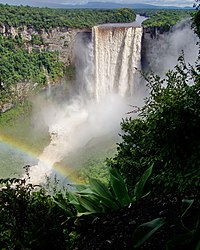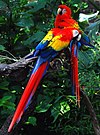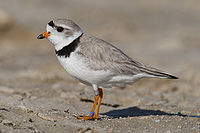User:Sunita Samichand
My first class, 2st Febuary 2009
| Website: | ncerdleaders.gmail.com |
| Employer: | NCERD , Ministry of Education |
| Occupation: | Confidential Secretary |
| Other roles: | Nil |
| Nationality: | Guyanese |
| Country: | Guyana |
My sandbox
From WikiEducator
My Sandbox
Contents
Contact Information
Name: Indroutie Samichand E-mail: isamichand@yahoo.com [edit] Projects [edit] Profile
I am a Guyanese by birth. I was born on the month of March in Georgetown.I now reside at East Coast Demerara.
I am tall and "Slim" and light brown in complexion. I have three children (two boys , one girl) and a grandchild ( a girl). These four people are the joy of my life. They keep me going. Interests:Reading, Shopping,cooking ,travelling and meeting people.
I work with the Ministry of Education NCERD.I have been with this Ministry since 2002. I am attached directly to the Director's Office.
Professional Background
Ministry of Education, National Center for Educational Resources Devlopment (Web-ncerdleaders.com)
National Center for Educational Resource Development: Vision Statement
NCERD was established in 1986 to coordinate the functions initially of six Units. Later, the School Libraries Division & Document Centre was established thus expanding the coordinating functions to cover seven Units. The Vision of the institution states NCERD sees a highly professional, accountable, modern and democratic education service that has the capacity to actualize the variety of individual potentials which will form the bedrock of social and economic development of Guyana.
Mission Statement
The Mission Statement of the National Centre for Educational Resource Development (NCERD) states as follows:
To plan and implement all in-service teacher education programmes, in order to improve the quality of education at all levels in the system so that education may serve as an effective instrument of social economic development. Specifically, NCERD intends to develop and implement In-Service Teacher Education Programmes that are designed to enhance the capacities of Guyanese schools to become effective, inclusive and successfully learning communities. Deliver quality education through the dissemination of well researched pedagogical findings. Create environment and opportunities that will facilitate, nurture and sustain the empowerment of students and teachers through the development and actualization of individual potentials.
Organisation and Management
Under the umbrella of NCERD the work of the following are coordinated:
Curriculum Development and Implementation Unit, Measurement, Evaluation and Research Unit, Learning Resources Development Unit, Materials Production Unit, Distance Education and Information Unit, School Libraries Division, Administrative Unit.
Key Responsibilities
- Provide In-service and continuous training (professional, continuous growth and development) for teachers and other personnel.
- Expand opportunities for in-service teacher education.
- Advise on policy guidelines which relate specifically to Regional Learning Resources Centres (RLRC).
- Conceptualize, develop, evaluate and procure learning resources.
- Train library assistants, laboratory technicians and teacher librarians.
- Promote the practice of more effective teaching strategies.
- Provide assistance in the classroom management.
- Upgrade the qualifications of untrained teachers in the regions, through Distance and Open learning methodology.
- Provide formal and non-formal educational radio programmes.
- Process examination papers and analyzing result for use by the relevant personnel within the Ministry and other agencies.
- Develop tests and scales required for national examinations.
- Formulate and process national Grades 2, 4, 6, & 9 Assessments, and Guyana Technical Education Examination (GTEE).
- Print, collate, store and package papers for examination.
- Order and distribute books and service equipment for school libraries.
- Prepare and make necessary adjustments to annual work programme and budget estimates.
- Each Unit has its own Mission Statement and Objectives.
Curriculum Development and Implementation Unit
Mission Statement
The Curriculum Development and Implementation Unit responsible for conceptualizing, development and Implementation Unit is responsible for conceptualizing, developing, testing and evaluating curriculum and other related materials that are pedagogically sound for Nursery, Primary and Secondary Schools.
This Unit has as its objectives the following:
- Development and test materials that are relevant and culturally appropriate.
- Ensure that the process of integration and infusion guide the approach in curriculum development.
- Ensure the unitary delivery of the curriculum in contrast to a fragmented subject-based approach.
- Encourage the participation of all stakeholders in developmental process of materials created for schools.
- Train a cadre of teachers in Curriculum management techniques in each region.
- Provide training support for practicing teachers.
- Prepare and make necessary adjustment to annual work programme and budget estimates.
Measurement, Evaluation and Research Unit
Mission Statement The mission of Measurement, Evaluation and Research Unit is to develop evaluation and assessment procedures so as to obtain and provide useful information that would facilitate more effective learning and teaching as well as sound decision-making within the Ministry of Education ansd other related agencies.
This Unit has as its objectives the following:
- Expose teachers and other education personnel to the fundamental issues and concepts involved in Assessment.
- Sensitize individuals to the need for objective and professional assessment of student learning within the classroom as well as regionally nationally.
- Equip individuals with the necessary knowledge and skills of selecting and constructing appropriate assessment instruments.
- Facilitate the use of assessment instruments at classroom levels, as well as regionally and nationally for assessing student strengths and weaknesses, and to provide relevant information for planning appropriate instructional programmes.
- Formulate final assessment instruments for National Examinations.
- Prepare and make necessary adjustment to annual work programme and budget estimates.
- Acquaint/remind staff security measures and secrecy with respect to the preparation and storage of examination papers.
(edit] WikiEducator Colleagues
M. Goolsarran, Director, NCERD, Guyana WikiAmbassador
S. Joseph, IRI Coordinator, NCERD-BEAMS, Guyana WikiAmbassador
M. Richards, Kuru Kuru CShopping, Co-Operative College, Guyana WikiAmbassador
My Personal Information
Guyana
From WikiEducator Jump to: navigation, search Guyana, officially the Co-operative Republic of Guyana and previously known as British Guiana, is the only country of the Commonwealth of Nations on the mainland of South America. It is bordered to the east by Suriname, to the south and southwest by Brazil and to the west by Venezuela. It is the fourth-smallest country on the mainland of South America (after Suriname, French Guiana, and Uruguay). It is one of the four non-Spanish language territories on the continent, along with the countries of Brazil - Portuguese, Suriname - Dutch and the French Guiana - French. Culturally, Guyana associates primarily with the English-speaking Caribbean countries such as Jamaica, or Trinidad and Tobago.
Contents [hide] 1 History 2 Geography 3 Guyana Education 4 Guyana WikiAmbassadors 4.1 Guyana WikiEducator Contributors
History
The first Europeans arrived in Pirate ships in the area around 1510, a theory that supports the current accent on the quasi-English language spoken today. Guyana was inhabited by the Arawak and Carib tribes of Amerindians. Although Christopher Columbus sighted Guyana during his third voyage (in 1498), the Dutch pirates were first to establish colonies: Essequibo (1616), Berbice (1627), and Demerara (1752). The British assumed control in the late 18th century, and the Dutch formally ceded the area in 1814. In 1831 the three separate colonies became a single British colony known as British Guiana.
Escaped slaves formed their own settlements known as Maroon communities. With the abolition of slavery in 1834 many of the former enslaved people began to settle in urban areas. Indentured labourers from modern day Portugal (1834), Germany (first in 1835), Ireland (1836), Scotland (1837), Malta (1839), China and India (beginning in 1838) were imported to work on the sugar plantations.
In 1889 Venezuela claimed the land up to the Essequibo. Ten years later an international tribunal ruled the land belonged to British Guyana.
Guyana achieved independence from the United Kingdom in 1966 and became a republic on 23 February 1970, remaining a member of the Commonwealth. The United States State Department and the United States Central Intelligence Agency (CIA), along with the British government, played a strong role in influencing who would politically control Guyana during this time.[1] They provided secret financial support and political campaign advice to pro-western Guyanese of African descent, especially Forbes Burnham's People's National Congress to the detriment of the Cheddi Jagan-led People's Progressive Party, mostly supported by Guyanese of Indian descent, which had ties with the Soviet Union. In 1978, Guyana received considerable international attention when 918 almost entirely American members of the Jim Jones-led Peoples Temple died in Jonestown, Georgetown and at a Temple attack at a small airstrip which resulted in the murder of five people, including the only Congressman murdered in the line of duty in U.S. history, Leo Ryan.
Geography
Kaieteur Falls in central GuyanaGuyana can be divided into four natural regions: a narrow and fertile marshy plain along the Atlantic (low coastal plain) coast where most of the population lives, then a white sand belt more inland (hilly sand and clay region), containing most of Guyana's mineral deposits, the dense rainforests (Forested Highland Region) across the middle of the country, the grassy flat savannah in the south and finally the larger interior highlands(interior savannah) consisting mostly of mountains that gradually rise to the Brazilian border. Guyana's main mountains are contained here, including Mount Ayanganna (6,699ft (2,042m)) and on Mount Roraima (9,301ft (2,835m); the highest mountain in Guyana) on the Brazil-Guyana-Venezuela tripoint, part of the Pakaraima range. Roraima and Guyana's tepuis are said to have been the inspiration for Sir Arthur Conan Doyle's 1912 novel The Lost World. There are also many steep escarpments and waterfalls, including the famous Kaieteur Falls. Between the Rupununi River and the border with Brazil lies the Rupununi savannah, south of which lie the Kanuku Mountains. There are many rivers in the country, the three main ones being (west to east) the Essequibo, the Demerara, and the Berbice. There is also the Corentyne along the border with Suriname. At the mouth of the Essequibo are several large islands. The 90-mile (145 km) Shell Beach along the north-west coasts. Guyana is a major breeding area for sea turtles (mainly Leatherbacks) and other wildlife.
.The local climate is tropical and generally hot and humid, though moderated by northeast trade winds along the coast. There are two rainy seasons, the first from May to mid-August, the second from mid-November to mid-January. It has one of the largest unspoiled rain forests in South America, some parts of which are almost inaccessible by humans. In 2008, the BBC ran a four-part programme called Lost Land of the Jaguar which highlighted the huge diversity of wildlife, including undiscovered species, and rare species such as the giant otter and harpy eagle.
Guyana Education
Comments
Hi Ms. Sunita interesting Page ... a job well done too you ... you are on a great start to be coming a Wiki Educator ... good luck ..





